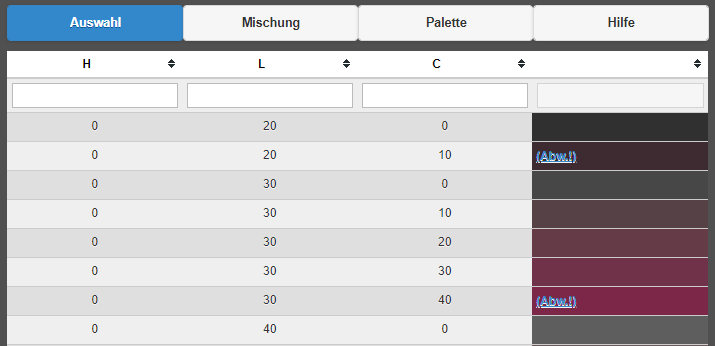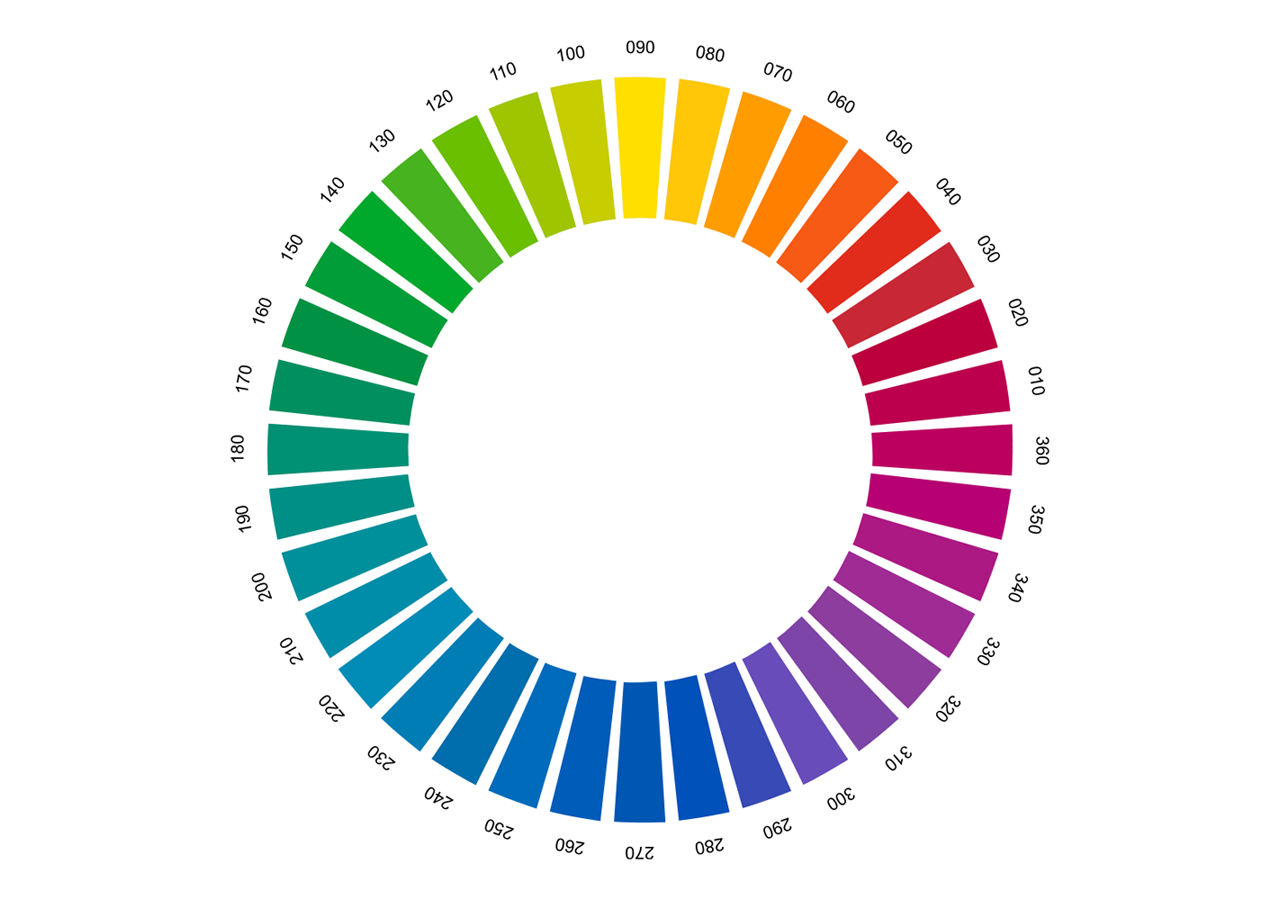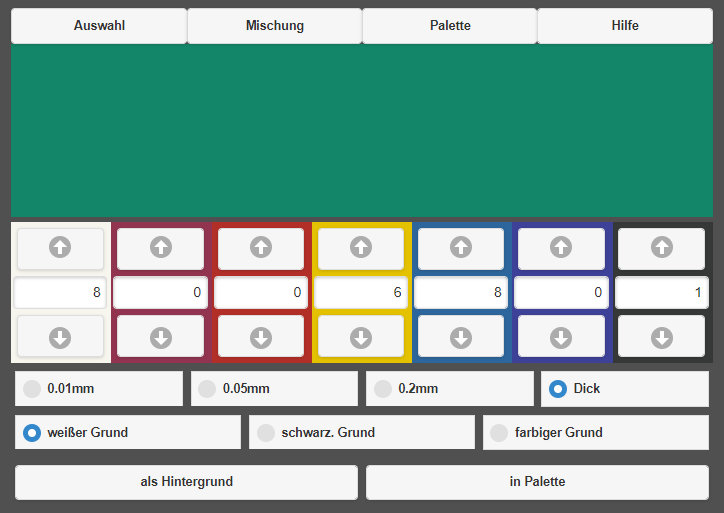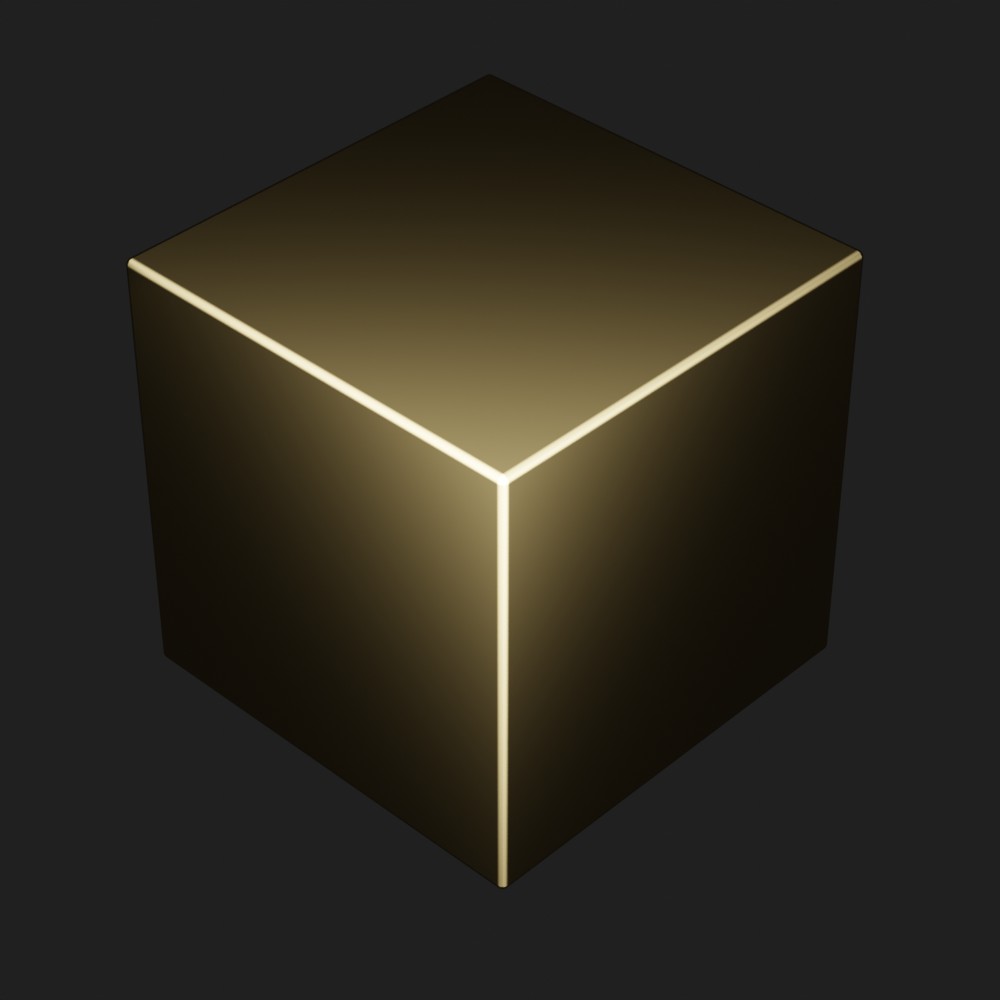Mixing acrylic colors (with online mixing software)
For several years I have systematically dealt with the color mixing of acrylic paints. For my experiments I used the color system
Sirius® Primary Acryl-System
of the Lascaux company. After many mixing experiments and the measurement of the mixed colors with a spectrophotometer, a color mixing program was developed, which runs in the browser (Chrome, Firefox or Edge) and simulates the mixing of the 7 basic colors drop by drop. It predicts the mixed color that will be produced after drying. It helps especially beginners to carry out mixing experiments without wasting material.
Before the first use, however, there is a necessary disclaimer:
This software is licensed under the terms of the Creative Commons License
CC BY-ND.
Free use (also commercial) and distribution with reference to the author is allowed, as long as the content is not changed. The author has developed the software to the best of his knowledge and belief. However, he does not take any responsibility for damages or consequential damages resulting from the use of the software (such as incorrectly mixed colors).

Description
The program starts in “Selection” mode and displays a table of 1225 mixable colors:

The colors are sorted by their HLC values in the first three columns.
What do these values mean?
H = Hue stands for a value in the color circle 0..360°:

[By Holger Everding - Own work, CC BY-SA 4.0]
This value is very interesting because it allows you to find directly matching color contrasts and transitions. For example, the complementary colors in a circle are always directly opposite each other. Rainbow colors are adjacent, etc.
L stands for Luminance (0..100%). Regardless of the actual color, a value of 100% means that all light is reflected back by the color. 0% would correspond to total darkness.
C for Chroma (saturation, 0..100%) stands for the colorfulness of the color. Here, 100% means that the color is “pure”, without any additional black or white. 0% means that the color is somewhere between white and black.
The good news with this color system is that you can set all important color properties independently. The bad news is that not all such desired colors can be mixed. For example, it is not possible to mix a pure blue tone in the same high brightness as a yellow tone, because the blue pigments are always much darker.
More explanations about the color systems can be found on the page of
Freie Farbe e.V.
Back to the software: By clicking on the small triangles the columns can be re-sorted. Alternatively, entries such as “>30” in the empty fields of the second row limit the colors displayed.
On a well adjusted computer monitor, the fourth column indicates what the color will look like on paper if fully covering the paper. The indication “(Dev.)” means that the desired color cannot be mixed perfectly from the basic colors. In any case, a small color deviation will remain. The indication “no RGB” appears if the color cannot be displayed cleanly on the monitor. Then it is recommended to view the color on a printed HLC color card.
Simply select one of the 1225 color mixtures by clicking on the color patch and you will be guided to the “Mix” page where the selected color has already been adopted. For example, after clicking on the color 170 50 40, the display will look like this

The numbers in the color patches correspond to the number of drops that are dispensed from the original containers held vertically. The number of drops can be changed by clicking on the arrow keys or by typing in the text fields.
Of course, any mixing experiments can be done directly without starting from the suggested selection colors.
Basically, opaque and dried (!) color surfaces are always assumed, i.e. color shifts caused by the painting surface or auxiliary materials (such as brighteners) are not taken into account. To get an impression of how the paint looks as a thin layer, the maximum layer thickness can be selected with the 0.01mm, 0.05mm and 0.2mm buttons. The color is then displayed in a gradient from the far left with a layer thickness of 0mm to the far right to the maximum selected layer thickness. This gives you a good impression of how the run-out of a brushstroke, or a strongly thinned color will look.
The background can be white, black, or colored. For a colored background, you must first set another color as the background using the corresponding button.
To add the mixture to the color palette, simply click on the “Add to Palette” button at the bottom.
The palette shows all your selected color mixtures. At the beginning the table shows the HLC values and the number of drops required for each color. A click on the Weight% or Volume% button shows instead the corresponding percentages of the liquid color. This is more suitable when larger amounts of color are needed or when a weighing scale is available.
